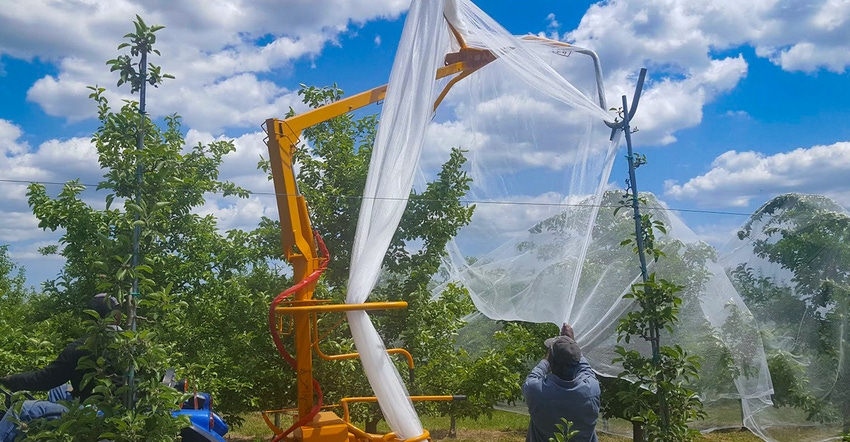September 12, 2019

In-orchard research funded by the Northern New York Agricultural Development Program is helping apple growers respond to pests with the latest management practices.
With a grant from the Northern New York Agricultural Development Program, Michael Basedow, a tree fruit specialist with Cornell Extension’s Eastern New York Commercial Horticulture Program, provided weekly pest scouting data to help growers respond to orchard pests with appropriate pest management tactics. He also initiated a project to evaluate whether exclusion netting, used for protecting apples from hailstorm damage, might also protect the fruit from orchard pests.
"Pest management is one of the largest investments fruit growers must make in terms of time, labor and materials to produce marketable fruit and maintain healthy trees," Basedow says.
A series of hailstorms in 2017 damaged the regional apple crop. One grower reported more than 60% damage.
"Growers selling hail-damaged fruit for juice that would otherwise have sold at retail prices can see as much as a 98% decrease in the economic value of their crop,” Basedow says.
Testing the netting
He worked with commercial growers in Clinton and Essex counties who installed hail netting. Trials in France and Quebec, Canada, showed success in limiting damage by codling moth and other orchard pests, but the use of drape-style netting was not well-evaluated under North Country orchard conditions.
"We are constantly looking at ways to increase the use of integrated pest management practices that allow us to produce a commercially viable crop while also making the best use of growers' time, labor and money. We wanted to see if the hail netting might be an effective practice to add to our apple growers' IPM toolbox," he says.
The trial provided weekly trap data on four key apple pests: codling moth, Oriental fruit moth, obliquebanded leafroller and apple maggot.
"Results from the trial showed that traps in the trees under the netting caught significantly fewer of the four key pests compared to the unnetted trees,” he says, but "the pest pressure levels in 2018 for three of the four key pests was such that the feasibility of using hail netting for pest exclusion is still uncertain. The netting may help reduce pest numbers enough to reduce the total number of orchard sprays needed for some pests, such as apple maggot, where spray decisions are based on well-established economic thresholds."
He adds that the sites with the most effective pest exclusion were those where hail netting was tied to the lower limbs and trunks of the apple trees. The orchard with the best control applied the netting to trees grown to a tall spindle training system with the netting secured tightly to the trunks.
The project provided more than 450 orchard businesses with weekly pest scouting data in 2018. The full project report is posted on the NNYADP website at nnyagdev.org.
Source: Northern New York Agricultural Development Program, which is solely responsible for the information provided and is wholly owned by the source. Informa Business Media and all its subsidiaries are not responsible for any of the content contained in this information asset.
You May Also Like




